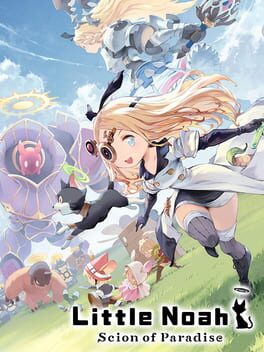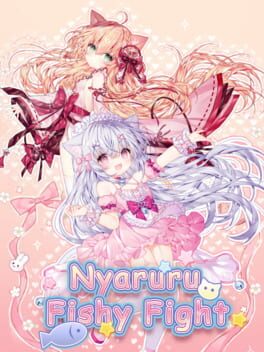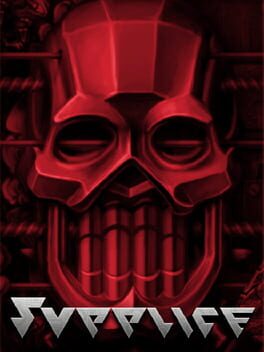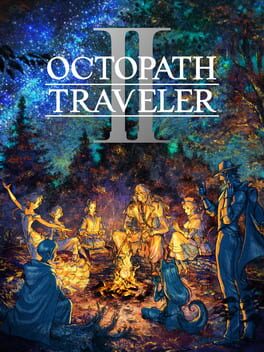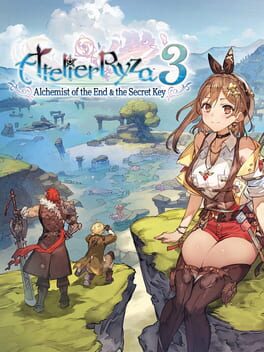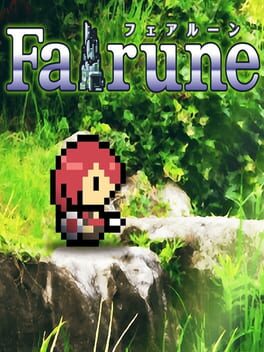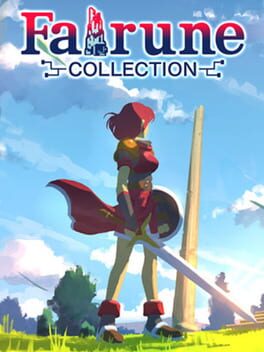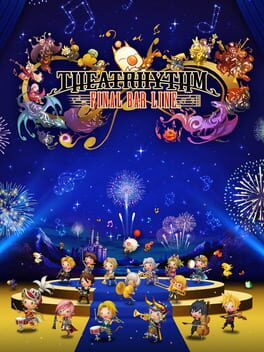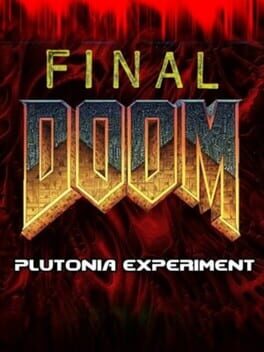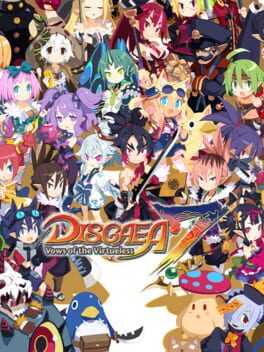moogy
2022
2023
2023
The cutscene-to-gameplay ratio could use some work, but generally a fun experience. There's enough stuff to find that you don't feel compelled to just hit up character stories one after another, and when you do go through them they're mostly engagingly written and presented. Didn't blow my mind but not a lot of complaints either.
Still way too easy for its own good, and not all of the character subplots landed for me, but it's great to see a proper JRPG sequel that builds meaningfully on its predecessors.
Gust really nailed the feeling of adventure with this game; while the rewards for exploration aren't always as compelling as they could be, the world is magical enough that the act of exploration itself is satisfying, and I felt driven to see everything the game had to offer.
Combined with a strong script and poignant finale, I came away feeling that my time with Ryza was well spent.
Gust really nailed the feeling of adventure with this game; while the rewards for exploration aren't always as compelling as they could be, the world is magical enough that the act of exploration itself is satisfying, and I felt driven to see everything the game had to offer.
Combined with a strong script and poignant finale, I came away feeling that my time with Ryza was well spent.
2016
2013
2023
2018
2018
Played on UV, pistol starting every map. All maps played to completion, including the secret ones. Mid-map saves weren't used anywhere except for the ending of map 09 and the Icon of Sin fight. The former because it's really hard, the latter because the Icon of Sin is lame and I wanted to finish the game already.
Source port used was dsda-doom, primarily because it has proper borderless fullscreen support.
Playtime was around 32 hours in total, roughly an hour per map on average. The longest I spent on a single map was ~4-5 hours for Speed (map 12).
As someone first playing Doom in the 2020s, Plutonia was the game that truly taught me the potential of Doom, what makes it so fascinating to this day.
What I find striking about classic Doom is the wide range of skills it tests. You need to be able to grasp geometry layouts and enemy positions in a (pseudo) 3D space. You need a basic understanding of routing concepts like resource management and threat mitigation. Aiming and movement are demanding on a basic mechanical level. Individual combat encounters demand swift reflexes and a sense of rhythm. Level design is freeform enough that you may need to navigate gargantuan mazes. Sometimes there's even platforming! Doom blends many disparate design elements―that is, sources of difficulty―to create a distinct experience with seemingly limitless depth. Plutonia conveyed this to me better than the original games ever did.
Why? Simply put, Plutonia is both bolder and more refined than the originals. This is not to discredit id's accomplishment with the originals, of course―while the map design is very rough in those games, we wouldn't have Doom period without them, and the Casali brothers needed the foundation they provided to build Plutonia upon.
Either way, the Casali brothers succeeded in pushing the envelope, in taking Doom to greater heights. While not every level in Plutonia is as tight as it could be (it was made by two people in four months, after all), its design is, in a word, purposeful. The Casali brothers weren't figuring things out as they went along; they knew what they wanted to do, and that was challenge the player in novel and exciting ways. This is most apparent with the enemy placement and encounter design. There are no "tiers" of monsters―no fodder, no midbosses, no bosses, just threats to be placed in ways that complicate and enhance the level elements surrounding them. Why are there so many chaingunners? Because they force you to respect them, which in turn forces you to approach the surrounding design with more care. You will be put under pressure and taken out of your comfort zone, be it by chaingunners or revenants or archviles or even cyberdemons, but that's a good thing. Victory tastes so much sweeter when you've worked for it.
I was also generally impressed by the basic level layouts in Plutonia. They're well-paced and suitably intense throughout; even the larger levels never feel sprawling. The de facto finale, Odyssey of Noises, is an obvious standout in the level design department, with its inspired theming and complex, multi-layered pathing. It's so good that I have to question why there's not more discussion of this level in mainstream gaming spaces, especially given that it's featured in a commercial release from id. It'd certainly be more interesting than yet another opinion piece breathlessly proclaiming the inimitable genius of the interlocking world in Dark Souls. I don't see people lavishing the same praise on Super Metroid for leading you back into Crateria via red Brinstar... But I digress.
All in all, Plutonia is proof that sometimes just wanting to make something hard is the right mindset. In their pursuit of new challenges, the Casali brothers redefined what Doom could be and inspired generations of mappers to come.
Plutonia (at least under the conditions I played it with) was significantly harder than any Doom content I had played prior, and I really felt like I was in over my head at first. Around Go 2 It, though, things clicked for me, and I began to develop an appreciation for the torment. It was worth persevering through all the pain; initially, I wasn't sure if I'd move on to fanmade Doom WADs, but the idea is starting to seem very appealing...
Source port used was dsda-doom, primarily because it has proper borderless fullscreen support.
Playtime was around 32 hours in total, roughly an hour per map on average. The longest I spent on a single map was ~4-5 hours for Speed (map 12).
As someone first playing Doom in the 2020s, Plutonia was the game that truly taught me the potential of Doom, what makes it so fascinating to this day.
What I find striking about classic Doom is the wide range of skills it tests. You need to be able to grasp geometry layouts and enemy positions in a (pseudo) 3D space. You need a basic understanding of routing concepts like resource management and threat mitigation. Aiming and movement are demanding on a basic mechanical level. Individual combat encounters demand swift reflexes and a sense of rhythm. Level design is freeform enough that you may need to navigate gargantuan mazes. Sometimes there's even platforming! Doom blends many disparate design elements―that is, sources of difficulty―to create a distinct experience with seemingly limitless depth. Plutonia conveyed this to me better than the original games ever did.
Why? Simply put, Plutonia is both bolder and more refined than the originals. This is not to discredit id's accomplishment with the originals, of course―while the map design is very rough in those games, we wouldn't have Doom period without them, and the Casali brothers needed the foundation they provided to build Plutonia upon.
Either way, the Casali brothers succeeded in pushing the envelope, in taking Doom to greater heights. While not every level in Plutonia is as tight as it could be (it was made by two people in four months, after all), its design is, in a word, purposeful. The Casali brothers weren't figuring things out as they went along; they knew what they wanted to do, and that was challenge the player in novel and exciting ways. This is most apparent with the enemy placement and encounter design. There are no "tiers" of monsters―no fodder, no midbosses, no bosses, just threats to be placed in ways that complicate and enhance the level elements surrounding them. Why are there so many chaingunners? Because they force you to respect them, which in turn forces you to approach the surrounding design with more care. You will be put under pressure and taken out of your comfort zone, be it by chaingunners or revenants or archviles or even cyberdemons, but that's a good thing. Victory tastes so much sweeter when you've worked for it.
I was also generally impressed by the basic level layouts in Plutonia. They're well-paced and suitably intense throughout; even the larger levels never feel sprawling. The de facto finale, Odyssey of Noises, is an obvious standout in the level design department, with its inspired theming and complex, multi-layered pathing. It's so good that I have to question why there's not more discussion of this level in mainstream gaming spaces, especially given that it's featured in a commercial release from id. It'd certainly be more interesting than yet another opinion piece breathlessly proclaiming the inimitable genius of the interlocking world in Dark Souls. I don't see people lavishing the same praise on Super Metroid for leading you back into Crateria via red Brinstar... But I digress.
All in all, Plutonia is proof that sometimes just wanting to make something hard is the right mindset. In their pursuit of new challenges, the Casali brothers redefined what Doom could be and inspired generations of mappers to come.
Plutonia (at least under the conditions I played it with) was significantly harder than any Doom content I had played prior, and I really felt like I was in over my head at first. Around Go 2 It, though, things clicked for me, and I began to develop an appreciation for the torment. It was worth persevering through all the pain; initially, I wasn't sure if I'd move on to fanmade Doom WADs, but the idea is starting to seem very appealing...
2023
2023
